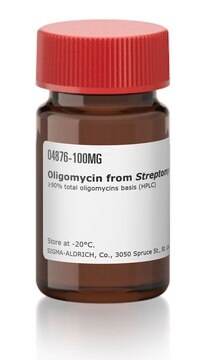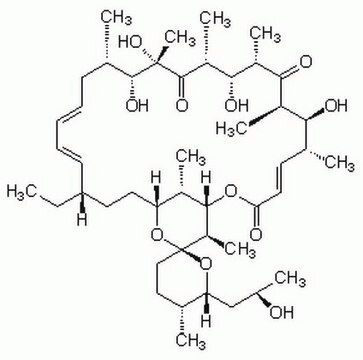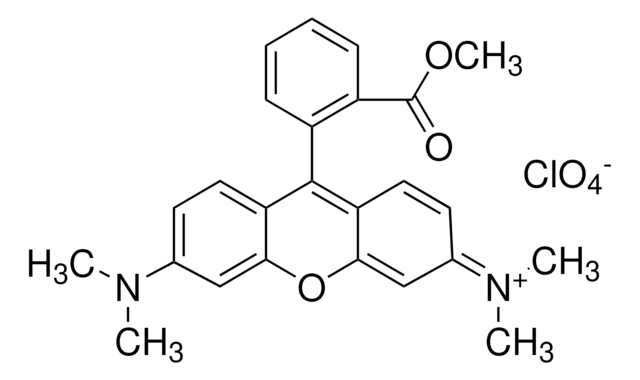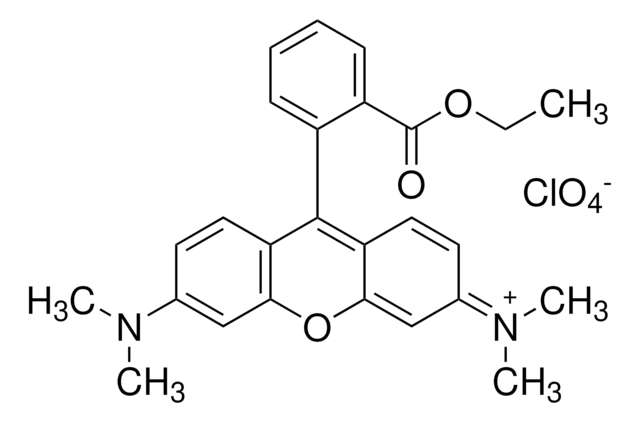C2920
Carbonyl cyanide 4-(trifluoromethoxy)phenylhydrazone
≥98% (TLC), powder, Mitophagy inducer
Sinónimos:
FCCP, Mesoxalonitrile 4-trifluoromethoxyphenylhydrazone
About This Item
Productos recomendados
Nombre del producto
Carbonyl cyanide 4-(trifluoromethoxy)phenylhydrazone, ≥98% (TLC), powder
Nivel de calidad
Ensayo
≥98% (TLC)
Formulario
powder
color
yellow
mp
174-175 °C (dec.) (lit.)
solubilidad
95% ethanol: soluble
temp. de almacenamiento
2-8°C
cadena SMILES
FC(F)(F)Oc1ccc(N\N=C(/C#N)C#N)cc1
InChI
1S/C10H5F3N4O/c11-10(12,13)18-9-3-1-7(2-4-9)16-17-8(5-14)6-15/h1-4,16H
Clave InChI
BMZRVOVNUMQTIN-UHFFFAOYSA-N
¿Está buscando productos similares? Visita Guía de comparación de productos
Descripción general
Aplicación
Palabra de señalización
Danger
Frases de peligro
Consejos de prudencia
Clasificaciones de peligro
Acute Tox. 4 Oral - Aquatic Chronic 4 - Eye Dam. 1 - Skin Corr. 1B - Skin Sens. 1
Código de clase de almacenamiento
6.1A - Combustible acute toxic Cat. 1 and 2 / very toxic hazardous materials
Clase de riesgo para el agua (WGK)
WGK 3
Punto de inflamabilidad (°F)
Not applicable
Punto de inflamabilidad (°C)
Not applicable
Equipo de protección personal
Eyeshields, Faceshields, Gloves, type P2 (EN 143) respirator cartridges
Elija entre una de las versiones más recientes:
¿Ya tiene este producto?
Encuentre la documentación para los productos que ha comprado recientemente en la Biblioteca de documentos.
Los clientes también vieron
Nuestro equipo de científicos tiene experiencia en todas las áreas de investigación: Ciencias de la vida, Ciencia de los materiales, Síntesis química, Cromatografía, Analítica y muchas otras.
Póngase en contacto con el Servicio técnico












